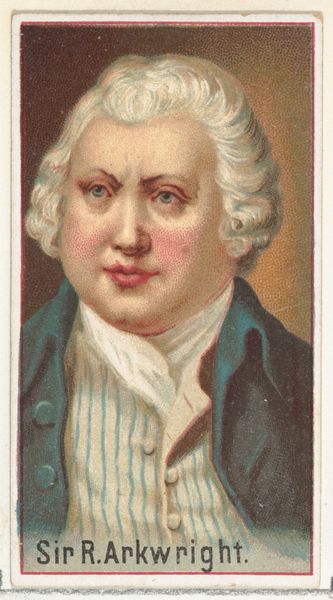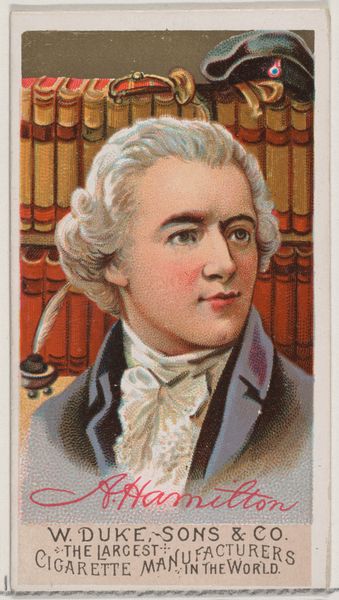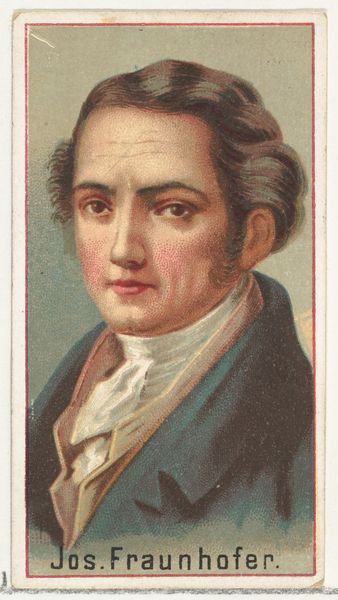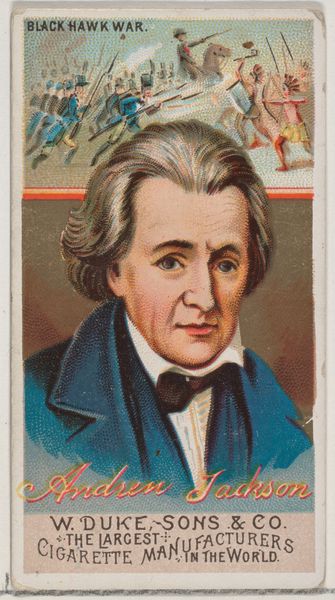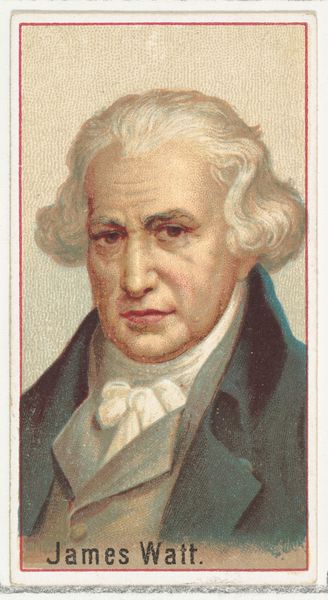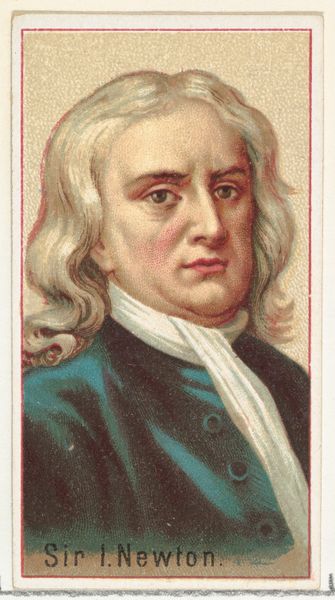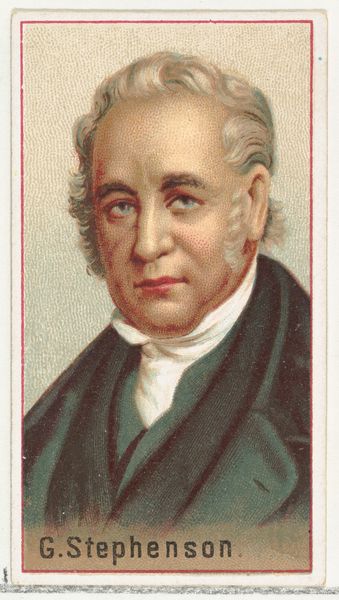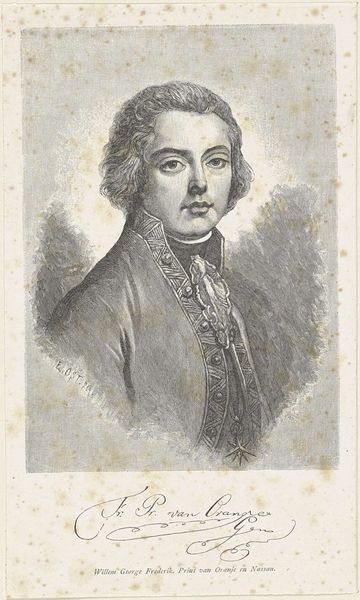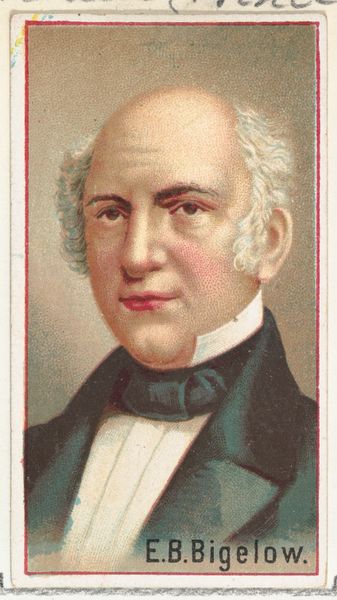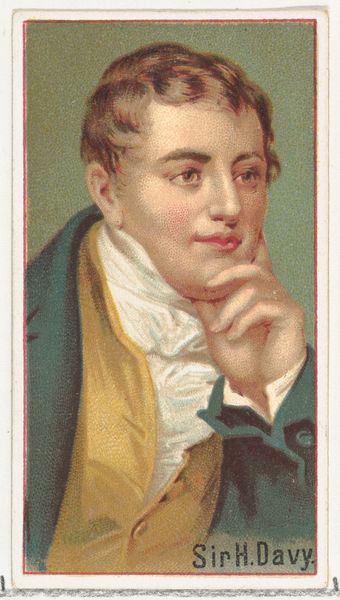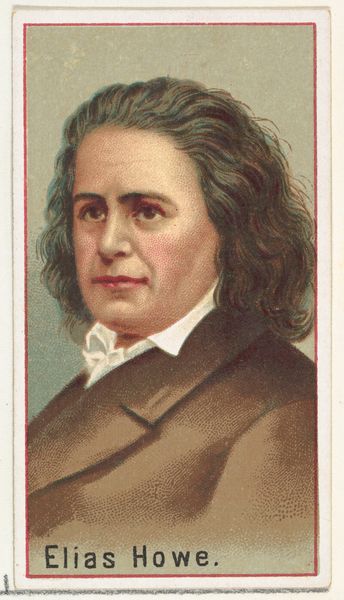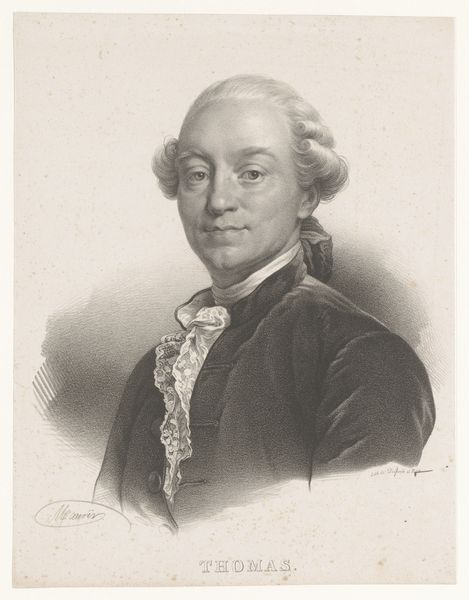
Edmund Cartwright, printer's sample for the World's Inventors souvenir album (A25) for Allen & Ginter Cigarettes 1888
0:00
0:00
drawing, print
#
portrait
#
drawing
# print
#
impressionism
Dimensions: Sheet: 2 3/4 x 1 1/2 in. (7 x 3.8 cm)
Copyright: Public Domain
Curator: Here we have an 1888 print, a printer's sample card, actually. It's part of a series called "World's Inventors," intended for the Allen & Ginter Cigarettes souvenir album, and features a portrait of Edmund Cartwright. Editor: It has this dreamlike quality. Look how soft the edges are; it feels almost impressionistic despite being a printed image. A tiny beacon of nostalgia, mass-produced with what kind of material? Curator: Well, these were chromolithographs, immensely popular and affordable. This one is a drawing rendered as a print, primarily for commercial distribution—included in packs of cigarettes. Think about that circulation! Editor: Exactly! So, the card functions as both advertisement and collectible. What labor went into this design, the printing? What were the socio-economic implications of such mass production and widespread dissemination of knowledge, packaged with addictive substances? Curator: Absolutely. Ginter sought to elevate his brand by associating it with intellect and progress, all within this frame of, you know, consumption and collection. Editor: So, we have a portrait, neatly contained and idealized. The sitter, seemingly disconnected from the machinery and industrial workforce spurred by his innovation. Is there irony here? A visual erasure of labor's raw materiality? Curator: Precisely. By circulating this image with cigarettes, Ginter cleverly weaves education, leisure, and product loyalty. But it’s important to understand these portraits helped construct a vision of technological advancement detached from labor conditions, reflecting an industrialist's perspective more than lived reality. Editor: Right. The industrial revolution depended upon Cartwright and his machine but here he's presented solely as an individual genius, reinforcing this myth of technological progress divorced from physical effort. Seeing the original makes me really wonder about who was forgotten by the way this history was produced. Curator: That's an excellent point. Viewing this piece today really prompts us to consider both the history it presents, but equally important, the historical processes that allowed such a simplified representation to circulate in the first place. Editor: Indeed, the tension between high ideals and tangible exploitation fascinates. A tiny piece, carrying very weighty meanings of history.
Comments
No comments
Be the first to comment and join the conversation on the ultimate creative platform.
